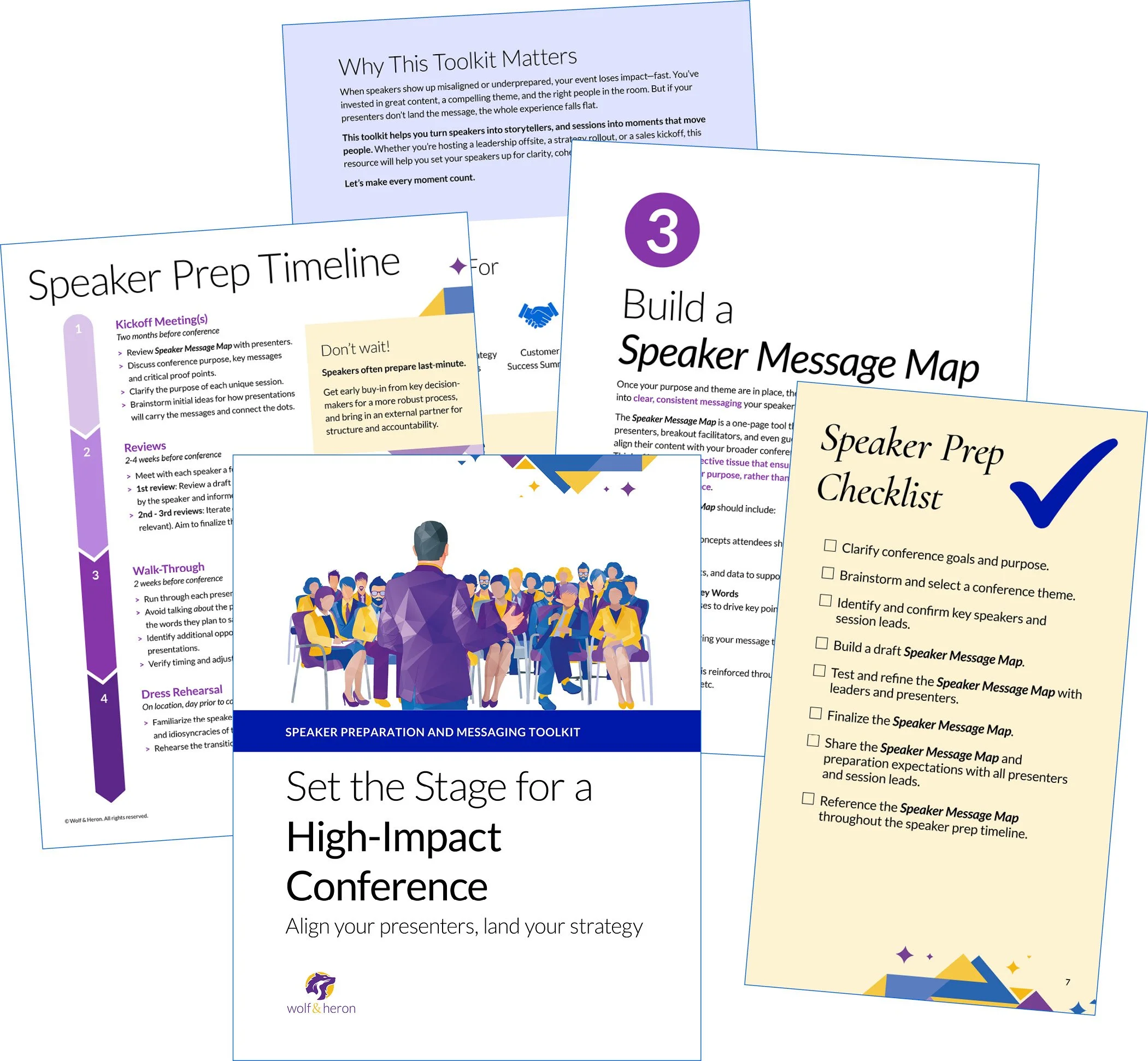Most meetings waste time because they lack intentional design. Learn how to plan with purpose by starting with empathy, clarifying success, creating a realistic flow, and using a facilitator guide.
Read MoreMeetings are the most expensive way organizations spend time together. When a meeting fails, few blame leadership or facilitation. Why? Facilitation is invisible when it works and ignored when it doesn’t. Which means leaders rarely improve at it, and teams keep bleeding time, energy, and morale. But a well-run meeting is one of the highest-leverage spends a leader can make. One well-facilitated strategy session can save months of misalignment, recouping its cost in weeks, if not days.
Read on for our meeting manifesto, to understand how we see meetings and the best ways to maximize their power.
Read MoreREFERENCE
Here’s a quick reference that lists the sources of influence power, in order of their relevance and effectiveness.
We’ve designed breakouts for sales kickoffs, leadership off-sites, and enterprise-wide strategy rollouts—and we’ve seen what works (and what doesn’t). This guide shares the exact principles we use to make sessions that are engaging, purpose-driven, and actually move people.
Read MoreWhen it comes to navigating change, mid-level managers have it rough. They’re stuck between a rock (experiencing intense change) and a hard place (supporting their people through it). They have to carry the emotional burden of leading their teams through change without any control over the bigger decisions.
Fortunately, there are several things managers can do to help their people (and themselves) navigate change.
Read MoreThe world’s attention is getting shorter—especially when it comes to talks. From TED and DisruptHR to board meetings and team stand-ups, speaking formats are shrinking. Five to ten minutes is quickly becoming the new standard. And while that may sound like a relief to anyone who dreads long presentations, short talks are surprisingly difficult to get right.
In fact, we’d argue they’re harder. A lot harder.
Here’s why, and what to do about it…
Read MoreMost organizations don’t have a meeting problem so much as they have a thinking-about-meetings problem.
Too many meetings are:
Scheduled by default (“We always meet on Tuesdays.”)
Held without a clear purpose or plan
Dominated by a few voices while others check email
Drifting aimlessly without resolution or follow-up
And that’s if people show up in the first place.
In our work with leaders across industries, we’ve seen this over and over: intelligent, well-intentioned people wasting hours in meetings that feel more like performance art than productivity. It's not that they don’t care. It’s that no one ever taught them how to design and facilitate a great meeting.
But don’t worry! There is a solution to this madness. Here’s what you can do…
Read MoreBreakouts during an SKO are supposed to be where the rubber meets the road—where strategy becomes personal, where people actually talk, and where the event gets real. It’s during the breakouts that the organization has the opportunity to make the strategy actionable for each and every role represented at SKO. If done right, this leads to learning, reflection, and further conversation… a true testament to the power of a well-executed SKO. But in too many SKOs (and other types of internal conferences and retreats), breakouts fall flat.
Read on to understand why this keeps happening, the consequences, and what to do instead.
Read MoreAh, the annual Sales Kick-Off (SKO)—a high-energy, high-stakes event where the entire sales team gathers to be motivated, inspired, and equipped for the year ahead. Or, at least, that’s the intention. Too often, SKOs devolve into an endless parade of slide decks, a blur of talking heads, and a slow descent into what we at Wolf & Heron like to call Death By Presentation.
Read on to understand why this keeps happening, the consequences, and what to do instead.
Read MoreCASE STUDY
Download the case study to learn how Wolf & Heron worked hand-in-hand with the revenue enablement team at TierPoint to build buy-in, upskill the team, and accelerate execution.
Read MoreA SKO investment should be justified by how well it achieves strategic organizational goals. Unfortunately, SKO goals are often so vague that it’s impossible to integrate them into the feedback mechanism. If that’s the case for an event you’re planning, you certainly won’t know if you’ve achieved those goals… which begs the question, why have a SKO at all?
If you want your event to achieve its objectives, it’s critical that you identify, clearly, what those outcomes should be, and then weave them through your event like a red thread. That is how you’ll produce a Sales Kick Off where the investment earns you a return.
Read MorePeople don’t make decisions based on logic alone. They need to connect emotionally with your message —and use logic to justify it later. That’s where storytelling comes in. A good story doesn’t just inform; it makes people feel. And when they feel, they remember. More importantly, they act.
Read on to understand why stories work, what makes a story unique, and how to ensure your points land by wrapping them in stories.
Read MoreREFERENCE
Breakouts are where your attendees explore, discuss, and internalize the message you most want them to remember. They’re where concepts are made real and tangible. But too often, they turn into just another slide-driven presentation.
We’ve designed breakouts for sales kickoffs, leadership off-sites, and enterprise-wide strategy rollouts—and we’ve seen what works (and what doesn’t). This guide shares the exact principles we use to make sessions that are engaging, purpose-driven, and actually move people.
Read MoreNavigating change is at the heart of many conversations that we have—be it with a friend who’s struggling, a client we’re coaching, or a team we’re supporting. There are tons of thought leaders already offering tips and advice on how to navigate or lead change; where we like to focus is on designing meaningful conversations that drive clarity and create forward momentum for teams and individuals moving through change.
Read MoreAs speakers and speaker coaches, we spend a lot of time crafting talks—both for ourselves and with our clients. It’s an obvious exploration, therefore, for us to look into how we can leverage AI to craft these talks more quickly (and ideally, effectively). Recently, Stephanie started giving a talk entitled Stories That Sell. In the past several weeks, Stephanie has delivered this talk three times and here are the things she learned while leaning into AI as a tool to help her.
Read MoreBROCHURE
Our personalized approach to enhancing presentation skills and stage readiness, designed for both individual presenters and organizations.
Read MoreExecutive coaching is a soft skill. Yes, there are some technical frameworks you can be trained on, but at the end of the day, a good executive coach is proficient in what are generally considered soft skills: conversations, intuition, active listening, appreciative inquiry, etc. Soft skills are those less tangible skills that are more dependent on our ability to be human and interact with other humans than hard skills like accounting or even project management.
As AI takes more and more center stage in our collective awareness, and our ability to leverage and access AI-powered tools becomes commonplace, we have begun to wonder, Could AI be an effective executive coach?
Read MoreNine times out of ten, feedback conversations turn into difficult conversations because we build them up in our heads to be way bigger and more complicated than they really have to be. Here’s some of the advice that Stephanie gave Sara. What else would you offer?
Read MoreMaybe it’s cutesy to say that time management is an evergreen challenge… but it’s true. It ebbs and flows as our work lives and personal lives change. The busier we are, or the more important the task in front of us is, the harder it is to successfully and gracefully manage our time. And the crazy thing is, it’s in these moments of high stress and overwhelm where we most need to be able to trust and rely on our time management skills.
Depending on your situation, there are several ways you can better manage your time. Time management is an ongoing and continuous process of assessing, organizing, and executing.
Read MoreQuestions don’t have to be either leading or random. You can ask questions thoughtfully, in a way that encourages open discussion, collaboration AND you can ask questions that move people to action.
Here are some suggestions for questions anyone can use at several key moments within a consultative conversation, from kicking off the conversation to forwarding the action.
Read More


















